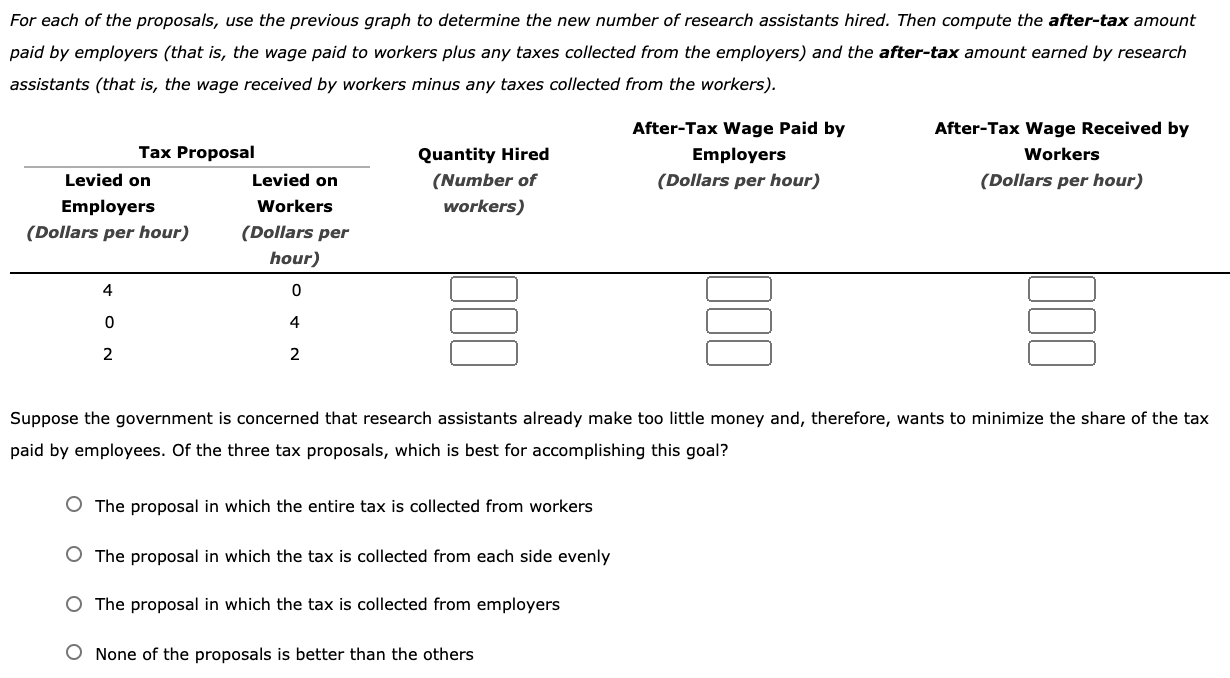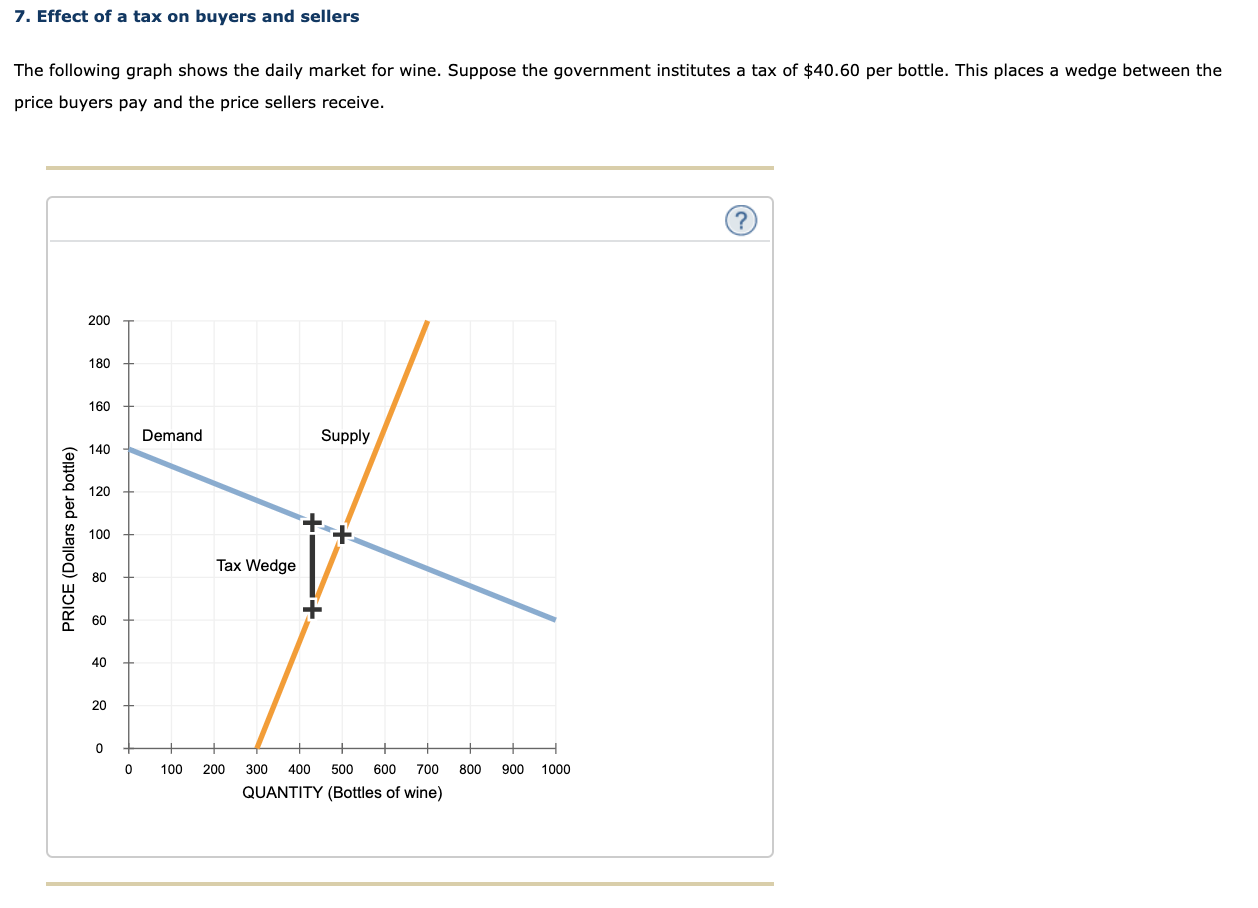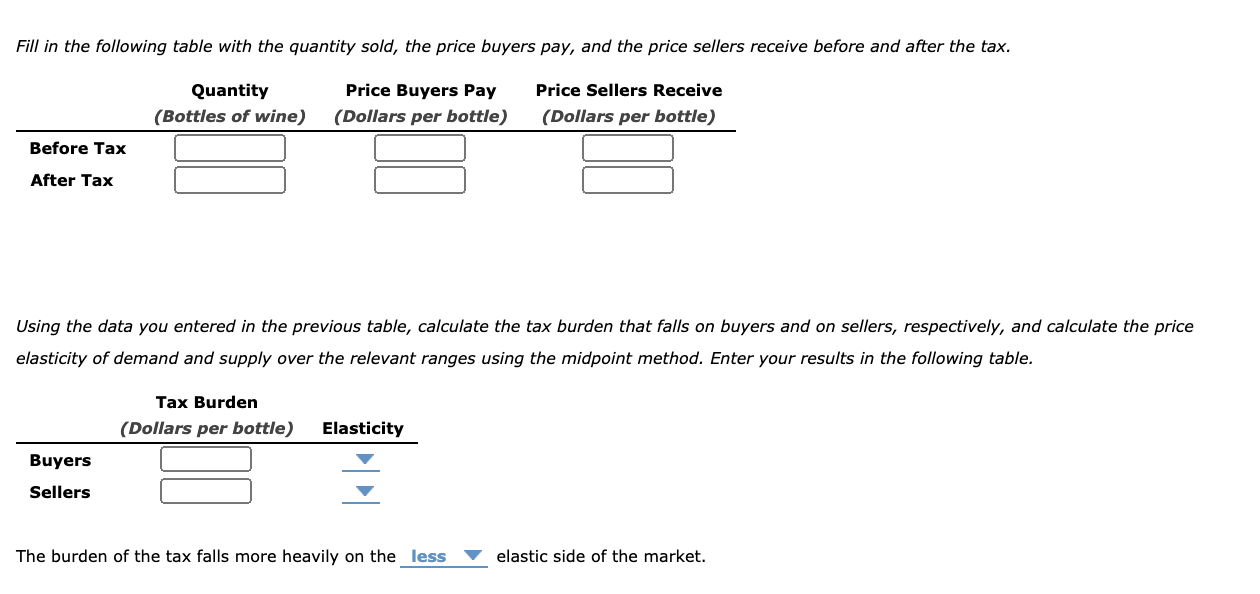Homework help
6. Who should pay the tax? The following graph shows the labor market for research assistants in the fictional country of Universalia. The equilibrium wage is $10 per hour, and the equilibrium number of research assistants is 100. Suppose the government has decided to institute a $4-per-hour payroll tax on research assistants and is trying to determine whether the tax should be levied on the employer, the workers, or both (such that half the tax is collected from each side). Use the graph input tool to evaluate these three proposals. Entering a number into the Tax Levied on Employers field (initially set at zero dollars per hour) shifts the demand curve down by the amount you enter, and entering a number into the Tax Levied on Workers field (initially set at zero dollars per hour) shifts the supply curve up by the amount you enter. To determine the before-tax wage for each tax proposal, adjust the amount in the Wage field until the quantity of labor supplied equals the quantity of labor demanded. You will not be graded on any changes you make to this graph. Note: Once you enter a value in a white field, the graph and any corresponding amounts in each grey field will change accordingly. Graph Input Tool (? 20 Market for Research Assistants 18 Wage ( Dollars per hour) 4 16 WAGE (Dollars per hour) Supply Labor Demanded (Number of workers) 250 Labor Supplied (Number of workers) 0 Demand Shifter Supply Shifter Demand Tax Levied on Employers 0 Tax Levied on (Dollars per hour) Workers Dollars per hour) N o O 20 40 60 80 100 120 140 160 180 200 LABOR (Number of workers)For each of the proposais, use the previous graph to determine the new number of research assistants hired. Then compute the aerhtax amount paid by empioyers (that is, the wage paid to workers plus any taxes coiiected from the employers) and the after-tax amount earned by research assistants (that is, the wage received by workers minus any taxes coiiected from the workers). After-Tax Wage Paid by After-Tax Wage Received by Tax Proposal Quanh'ty Hired Employers Workers Levied on Levied on {Number of (Dollars per hour) (Dollars per hour) Employers Workers workers) (Dollars per hour) {Dollars per hour) 4 0 [:1 :1 :1 0 4 [:1 :1 :1 2 2 [:1 :1 :1 Suppose the government is concerned that research assistants already make too little money and, therefore, wants to minimize the share of the tax paid by employees. Of the three tax proposals, which is best for accomplishing this goal? 0 The proposal in which the entire tax is collected from workers 0 The proposal in which the tax is collected from each side evenly O The proposal in which the tax is collected from employers 0 None of the proposals is better than the others 7. Effect of a tax on buyers and sellers The following graph shows the daily market for wine. Suppose the government institutes a tax of $40.60 per bottle. This places a wedge between the price buyers pay and the price sellers receive. ? 200 180 160 Demand Supply PRICE (Dollars per bottle) 140 120 100 Tax Wedge 80 60 40 ZU 0 0 100 200 300 400 500 600 700 800 900 1000 QUANTITY (Bottles of wine)Fill in the following table with the quantity sold, the price buyers pay, and the price sellers receive before and after the tax. Quantity Price Buyers Pay Price Sellers Receive (Bottles of wine) (Dollars per bottle) (Dollars per bottle) Before Tax After Tax Using the data you entered in the previous table, calculate the tax burden that falls on buyers and on sellers, respectively, and calculate the price elasticity of demand and supply over the relevant ranges using the midpoint method. Enter your results in the following table. Tax Burden ( Dollars per bottle) Elasticity Buyers Sellers The burden of the tax falls more heavily on the less V elastic side of the market










